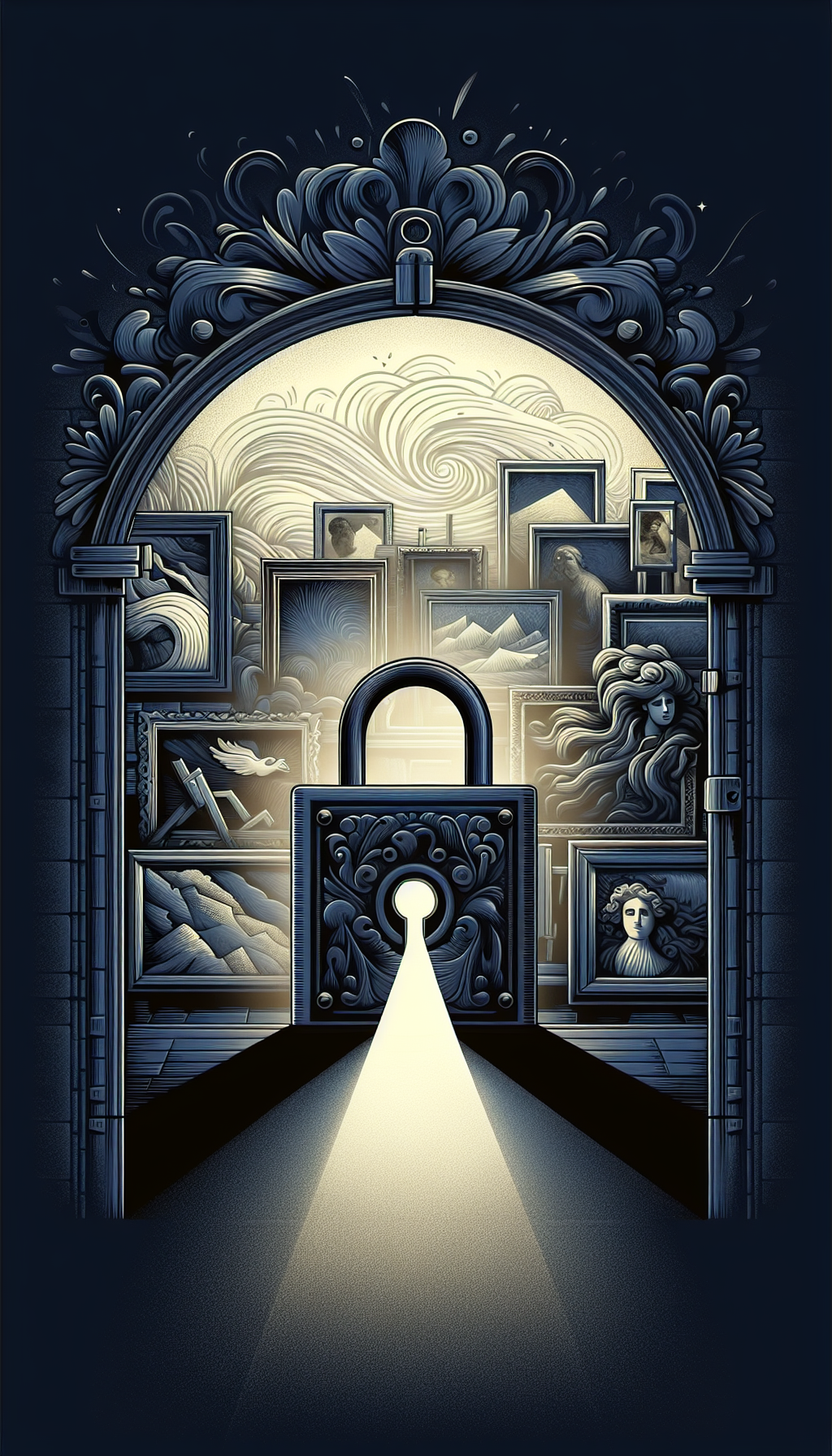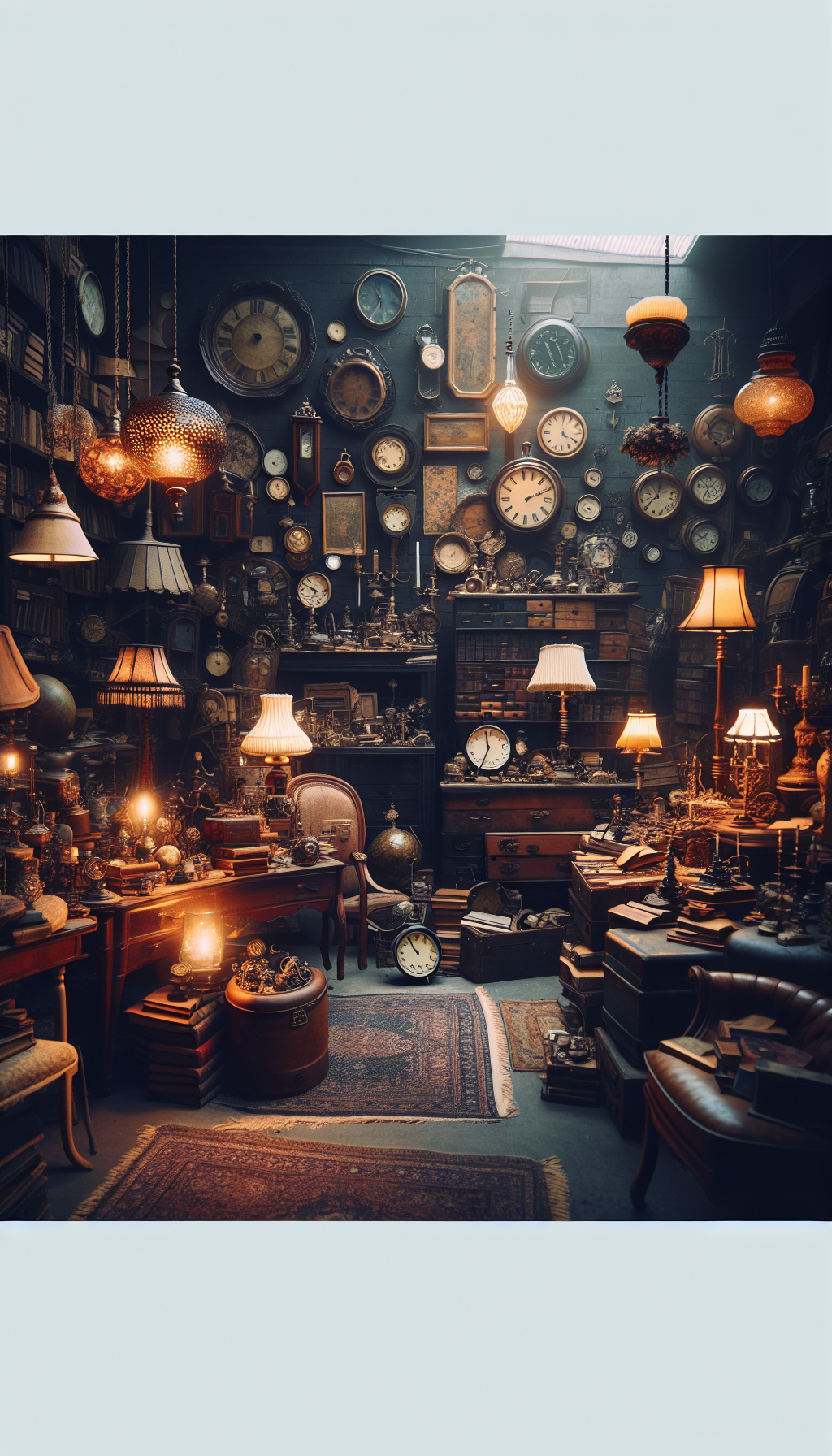63728b6ace46d
Serious collectors and appraisers share a trait: repeatable method. Whether you are evaluating a country chair, a studio pottery vase, or a nineteenth‑century landscape, disciplined steps will save time, reduce risk, and improve accuracy. The framework below focuses on what matters most—construction, materials, provenance, authenticity, comparables, valuation purpose, risk, and documentation—so you can reach defensible conclusions.
The appraiser’s core lens: construction, materials, and provenance
Start with what the object can tell you without paperwork.
- Construction: Joinery, tool marks, and manufacturing methods establish period and place. Hand‑cut dovetails with irregular pins suggest pre‑industrial cabinetmaking; machine‑cut dovetails and uniform saw marks imply later production. In bronzes, look for casting seams, chasing quality, and evidence of sand vs. lost‑wax casting. In textiles, inspect knot type, selvedge, and dyes.
- Materials: Identify species, fibers, metals, pigments, and binders. Oak vs. walnut affects furniture attribution; silver purity and hallmarks influence origin and value; ultramarine vs. Prussian blue reveals date plausibility in paintings; Bakelite vs. modern plastic helps date jewelry and design pieces.
- Surface and finish: Original patina and oxidation patterns are informative. French polish on a mahogany table suggests nineteenth‑century craftsmanship; heavy, uniform sanding under a glossy polyurethane finish suggests recent refinishing. For gilded frames, water‑gilding vs. oil‑gilding matters for period identification and condition grading.
- Labels, stamps, and marks: Maker’s stamps, retailer labels, gallery tags, frame‑maker labels, shipping stencils, and inventory numbers can be mined for history. Photograph them clearly and transcribe exactly—spelling, punctuation, and layout can point to particular periods or firms.
- Design and style: Cross‑check stylistic elements with construction realities. A “Queen Anne” highboy with plywood drawers is a mismatch. “Style of,” “after,” “manner of,” and “school of” are calibrated attribution phrases—use them deliberately when the evidence doesn’t support a firm maker or artist.
- Provenance: Build a chain of ownership. Ideal provenance is contemporaneous: invoices, correspondence, exhibition catalogues, collection labels, insurance schedules, prior appraisals, and photographs of the object in situ. Evaluate gaps, especially 1933–1945 in Europe. Provenance can add premium value when it ties the object to notable collections or exhibitions, but only when documentation is verifiable.
- Condition and integrity: Distinguish original from later components. Replaced feet, regilding, relined canvases, marriage pieces (unrelated parts combined), and added signatures all impact value. Note stable wear vs. active deterioration. Condition language should be specific: “two‑inch shrinkage crack to top; old, likely nineteenth‑century; stable,” not “some cracks.”
Rarity must be balanced against demand. A rare form without collector interest does not automatically command a premium. Conversely, common forms by highly collected makers can bring strong prices in top condition.
Authenticity and risk management: connoisseurship meets science and law
Authenticity rests on the convergence of three pillars: the object itself, documentation, and context within the artist’s or maker’s known body of work.
Visual and tactile examination: Consistency of wear (inside vs. outside, exposed vs. protected surfaces), oxidation in recesses vs. high points, natural vs. contrived craquelure, and under‑magnification tool marks are all critical. Look for modern hardware, Phillips screws, metric fasteners, polyester resins, or modern pigments where they do not belong.
Signatures and inscriptions: Study tool pressure, ink or paint flow, and siting. An anomalously bold signature over dirt or varnish can be a later addition. Compare letterforms to known examples and consider whether signed works by that artist are typical for the period and medium.
Scientific testing (selected tools and when to use them):
- XRF (X‑ray fluorescence): Non‑destructive elemental analysis. Useful for metal alloys, pigments (e.g., detecting titanium white in a “nineteenth‑century” painting), and plating thickness. It reports elements, not compounds—interpret results carefully.
- FTIR (Fourier‑transform infrared spectroscopy): Identifies organic compounds such as binders, varnishes, and polymers; can reveal modern restorations.
- Dendrochronology: Dates wooden panel felling; establishes earliest possible execution date for panel paintings and some furniture.
- Thermoluminescence: Estimates last firing date for ceramics and terracottas; has margins of error and sampling requirements.
- Radiocarbon (C‑14): Useful for organic materials, with calibration windows to interpret.
- Microscopy/UV: Detects retouches, inpainting, overcleaning, and differential fluorescence of restorations. Use testing to answer specific questions, not as a fishing expedition. Tests have limitations, costs, and sometimes require micro‑sampling—obtain informed consent from owners.
Risk and legal context:
- Cultural property: Determine whether the object may be subject to export restrictions, source‑country patrimony laws, or repatriation claims. Avoid endorsing recently surfaced archaeological material without robust provenance predating key cultural heritage laws.
- Regulated materials: Ivory, tortoiseshell, rosewood, feathers, and certain taxidermy fall under wildlife trade regulations. Confirm legal status before valuation for sale or transport.
- WWII/looted art due diligence: Scrutinize gaps in ownership 1933–1945, especially for European art. Absence of evidence is not evidence of absence—flag uncertainties.
- Stolen property checks: Search recognized databases and police registers where appropriate; document the search.
- Ethics and independence: Disclose conflicts of interest, fee structures (avoid fee‑contingent valuations), and limit scope to your competence. Keep workfiles; state assumptions and limiting conditions; use calibrated language for uncertain attributions.
Authenticity is not binary in many cases; be prepared to express probability with appropriate qualifiers and to recommend further specialist review.
Market dynamics and smart comparables
Comparables are not just “similar objects.” They are relevant, recent, and adjusted for differences. Build a comp set deliberately.
- Define the market segment: Identify the most relevant marketplace for the subject item—regional auction, international auction, specialist dealer, design fair, or private sale. The “right” market can vary by object.
- Time frame: Favor the last 3–5 years for most categories; for thinner markets, extend cautiously and adjust for trend.
- Apples to apples: For art, prioritize same artist, similar period, medium, subject matter, size, and signature status. For antiques, match maker, form, period, timber or alloy, and decorative elements.
- Condition adjustments: Visible restorations, losses, replaced parts, regilding, relining, or stains can significantly reduce comparability. Apply explicit adjustments or rank comps by condition grade relative to your subject.
- Provenance and exhibition premiums: Not all provenance creates value, but notable collectors, institutions, and published objects often do. Account for premiums only when evidence is public and verifiable.
- Channel effects: Auction hammer price plus buyer’s premium is not the same as retail asking or realized private sale. Retail replacement value (insurance) typically reflects full retail in a qualified market; fair market value (tax/estate) assumes an arm’s‑length buyer and seller, neither under compulsion.
- Geography and currency: Cross‑border sales impose exchange effects and differing demand. Normalize currency and consider import/export costs where relevant.
- Outliers: Exclude outliers unless they are explainable (e.g., record price at a single‑owner “white glove” sale with extraordinary marketing). Median and trimmed mean statistics often stabilize indications.
- Weighting: Use 5–15 good comparables when possible; weight by similarity and recency. Document the comps you considered and why you included or excluded them.
If the subject has no close comps (unique commission, atypical scale, or hybrid object), state the limitation, expand the search radius (time, geography, adjacent makers), and be transparent about uncertainty.
Valuation purposes and methods that fit the assignment
The “right number” depends on the assignment’s purpose. Define it first; your method follows.
- Fair Market Value (FMV): The price between a willing buyer and seller, neither under compulsion, both having reasonable knowledge of relevant facts, in the appropriate market. Common for estate, charitable donation, and equitable distribution. Typically aligns with secondary‑market data.
- Retail Replacement Value (RRV): The cost to replace with a like item in the retail market within a reasonable time. Used for insurance scheduling and claims. Can exceed FMV, particularly for items sourced through specialist dealers or where scarce supply meets high demand.
- Marketable Cash Value (MCV) or Liquidation Value: What the owner can expect in a prompt sale with limited exposure (dealer buy‑in, secondary auction with limited marketing). Often a percentage of FMV, reflecting transaction costs and risk.
- Orderly Liquidation Value (OLV) vs. Forced Liquidation Value (FLV): Distinctions matter in business contexts; clarify in your report if relevant.
- Income Approach: Limited but applicable in specific cases (e.g., leased artworks, images with licensing revenue, fractional interests). Requires credible income and discount rate assumptions.
- Cost Approach: Useful for recently made decorative arts or craft where replacement cost is knowable; rarely suitable for fine art and historic antiques where age, authorship, and market taste dominate.
- Scope of work and effective date: State what you examined (in‑person vs. photographs), tests performed, markets analyzed, and the effective valuation date (market conditions change). Identify extraordinary assumptions (e.g., assuming a signature is autograph pending expert opinion).
- Ranges and reporting: Provide a range when appropriate; be consistent with your comps and adjustments. Explain major adjustments and any risk factors (e.g., unresolved legal constraints). Avoid false precision.
Calibrate your narrative to the intended user: insurers need replacement pathways and comparable retail availability; estates need FMV and a clear comp matrix; collectors often appreciate both FMV and retail perspective for planning.
Practical field checklist
A concise, repeatable set of steps for first‑pass appraisal and triage:
- Safety and setup:
- Clean, flat, padded surface; nitrile gloves for sensitive surfaces; masks for mold or dusty textiles.
- Good lighting (including raking light) and a UV flashlight; 10x loupe; magnet; calipers; scale; tape; microfiber cloths.
- Identification:
- Photograph all sides, details, marks, damages, and context. Include a scale or ruler in at least one image.
- Record dimensions (H x W x D), weight, materials, and construction details. Note how parts join and how surfaces are finished.
- Transcribe marks, labels, stamps, hallmarks, and inscriptions exactly as seen.
- Condition:
- Note structural issues (cracks, splits, lifting veneers), surface issues (scratches, abrasions, overcleaning), and prior restorations (inpainting, regilding, patches).
- Use UV to detect overpaint and fluorescence differences; use magnet on suspected ferrous elements; tap ceramics lightly to detect hairlines (listen for dull thuds vs. clear ring).
- Provenance and paperwork:
- Gather invoices, correspondence, prior appraisals, exhibition or loan documents, and photographs of the object in prior settings. Note gaps and inconsistencies.
- Market triage:
- Identify the likely market segment (regional vs. international auction; specialist dealer).
- Pull 5–15 preliminary comparables; annotate similarities/differences and sale channels.
- Legal and ethical flags:
- Check for regulated materials (ivory, tortoiseshell, rosewood, feathers).
- Flag cultural property risks (archaeological artifacts; ethnographic items with potential repatriation issues).
- Scrutinize provenance gaps in sensitive periods (e.g., 1933–1945 Europe).
- When to call a specialist:
- High‑value artists or makers, conflicting signatures, complex restorations, or objects outside your core competence.
- Consider scientific testing when visual evidence conflicts or value hinges on attribution and period.
- Documentation:
- Draft clear notes, assumptions, and a preliminary opinion with a confidence level. Archive all photos and reference materials in your workfile.
Category cues:
- Furniture: Check drawer bottoms, runners, backboards, saw kerfs; look for shrinkage consistent with timber; sniff for recent solvents.
- Paintings: Inspect stretcher/strainer, tacking edges, paint layer cracking patterns, varnish type; look for stamps from suppliers; assess lining and patches.
- Ceramics: Examine footrim wear, glaze pooling, kiln grit; feel for over‑polished chips; review decoration under magnification.
- Silver: Read hallmark systems; test magnetism (plated steel traps); inspect solder seams; weigh and compare to size expectations.
- Rugs and textiles: Assess knot density, dyes (natural vs. synthetic), ends/selvages condition; check for moth or dry rot.
FAQ
Q: What’s the single biggest mistake in appraisal? A: Confusing purpose. The same object can have very different values for insurance (RRV) vs. estate (FMV) vs. quick sale (MCV). Define purpose first; select comps and methods accordingly.
Q: How much does a restoration reduce value? A: It depends on category, scope, and quality. Expert, reversible conservation that stabilizes without altering intent may have minimal impact, sometimes positive. Overcleaning, aggressive regilding, major replaced parts, or overpainting can reduce value substantially—often 20–70% compared to untouched examples. Document and adjust explicitly.
Q: Are certificates of authenticity (COAs) enough? A: Only if issued by the recognized authority (artist’s estate, catalogue raisonné committee, or established expert) and consistent with the object. Generic gallery COAs without supporting evidence carry little weight. Always corroborate with the object and market consensus.
Q: When should I use scientific testing? A: When the test can resolve a key uncertainty and the result is interpretable for that category—e.g., XRF to detect modern titanium white in a “nineteenth‑century” painting, dendrochronology to establish earliest panel date, or TL for ceramics. Weigh cost, invasiveness, and the value at stake; obtain owner consent; state tests and results clearly in the report.
Q: How do I report uncertainty without undermining the appraisal? A: Use calibrated attribution language (“attributed to,” “circle of,” “school of,” “manner of”) and state extraordinary assumptions. Provide value ranges and explain drivers of variance (condition, provenance, market thinness). Transparency strengthens credibility.
By applying a consistent, documented process—observing construction and materials, testing authenticity judiciously, selecting comparables intelligently, matching valuation to purpose, and managing risk—you’ll produce valuations that withstand scrutiny and serve clients’ real‑world needs.



